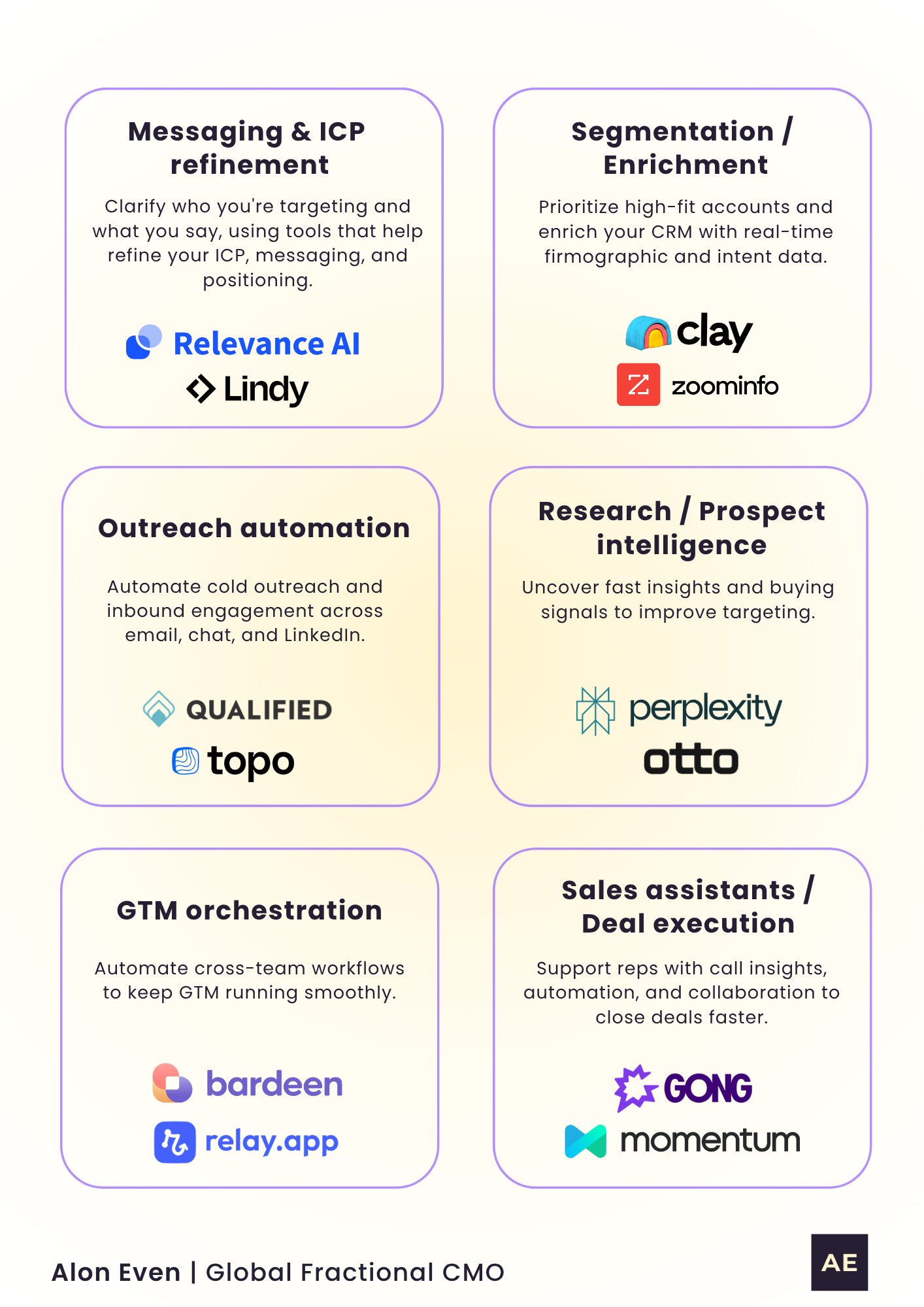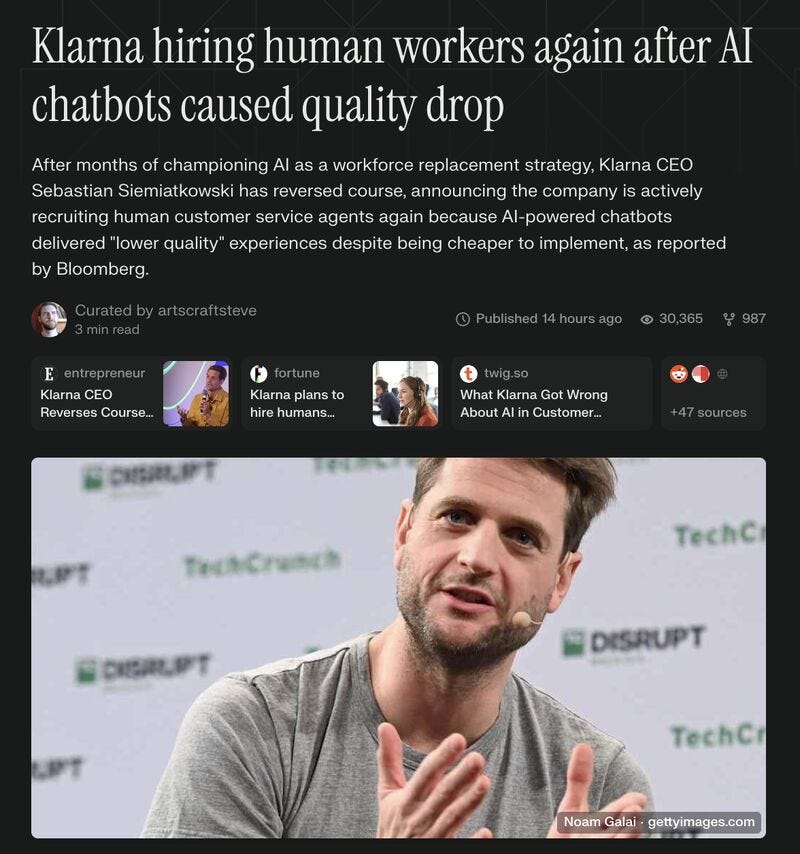AI here. AI there. New tools dropping every week. It’s exciting, but exhausting too.
I don’t know about you, but I can’t keep up with everything AI. And honestly, I don’t think we should.
I talk to a lot of CEOs, founders, and CMOs like me, and almost everyone feels the same way.
One call a few weeks ago really stuck with me. A startup CEO told me they were feeling stuck. They’ve added AI to almost everything:
Six tools. Three agents. Automated outbound. A chatbot on the site.
But something still wasn’t working, so I asked: What’s the actual goal here?
They didn’t have a clear answer. And they’re not alone.
That conversation got me thinking, not just about AI, but about how we decide what to automate, and why.
So I pulled together what I’ve seen working across GTM teams and reviewed a lot of tools along the way.
Not to chase trends, but to scale what already works.
Don’t start with AI
Before you pick a tool, take a step back.
Too many teams chase AI without changing how they go to market, just how fast they execute. That usually means more automation, more emails, more noise.
Speed alone won't fix GTM, or scale what isn't working. And let’s leave FOMO behind.
What matters most is:
→ Why are we doing this?
→ What are we trying to influence?
→ Then, how can AI support that strategy?
As I shared on LinkedIn:
GTM is fundamentally about understanding and influencing your B2B buyers. And buyers don’t build relationships with algorithms.
Yes, AI is powerful. But no, it’s not a strategy.
It can’t position your company. It can’t empathize with your buyers. And it won’t replace judgment when things get complex.
So don’t add AI just to keep up. Use it to scale what already works, and never let it dictate your GTM.
AI tools that actually support GTM
I reviewed dozens of tools and narrowed it down to a focused stack, so you don’t have to spend hours figuring out what’s hype and what actually helps.
And remember – all of these tools still need humans in the loop. They’re copilots, not replacements.
These aren’t just for marketing or sales, they help your whole GTM team work smarter, together.
Pro tip: Don’t try to automate everything at once. Start with one GTM activity, like outbound or lead handoff, and layer in AI where it actually improves efficiency and removes friction.
4 ways to put your AI GTM stack into action
Now for the fun part. Here’s how you can actually put these tools to work in your GTM:
1. Outbound campaigns
Clay finds high-fit accounts and enriches them with tech stack + funding data.
Topo.io generates personalized cold outreach.
Bardeen automates the entire process weekly.
→ Result: Scalable outbound, no spreadsheets, no manual steps.
2. Market research & positioning refresh
Perplexity tracks trends and competitor activity.
Relevance AI analyzes win/loss calls for insights.
Gong shows how buyers respond to new messaging.
→ Result: Refined positioning based on real signals, not guesswork.
3. Inbound → qualified lead handoff
Qualified engages and qualifies site visitors.
ZoomInfo enriches leads instantly.
Relay.app routes leads, assigns & notifies AEs, and keeps your GTM team in sync.
→ Result: Faster handoffs and no leads falling through the cracks.
4. Enablement & sales content automation
Gong captures key moments in calls.
Lindy turns those insights into sales docs and follow-ups.
Momentum.io tracks tasks, syncs CRM, and alerts stakeholders.
→ Result: Reps focus on selling, AI handles the admin.
Of course, there are plenty of other use cases, but the key is to tailor how you use AI based on your GTM and the processes that truly benefit from AI, not the other way around.
Between the lines
This story popped into my head while writing this:
Klarna laid off 700 people in 2022 and replaced them with AI. By 2025? They started hiring people back.
Their CEO even said: “It’s critical your customer knows there will always be a human.”
And he’s right.
But it’s not just about customer service.
It’s a warning for any company hoping AI alone can scale them to $30M ARR. I’ve seen that belief more than once on LinkedIn.
I guess some teams need to learn that the hard way, but we don’t have to.
Let strategy lead. And let AI follow.
Thanks for reading & see you next Saturday!
Alon
P.S. New here? Check out the latest topics.
P.P.S. When you're ready, here are 3 ways I can help you.



